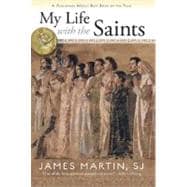
Note: Supplemental materials are not guaranteed with Rental or Used book purchases.
Purchase Benefits
What is included with this book?
| The Saint of the Sock Drawer: An Introduction | p. 1 |
| Child of God: Joan of Arc | p. 11 |
| Inward Drama: Therese of Lisieux | p. 27 |
| The True Self: Thomas Merton | p. 43 |
| Ad Majorem Dei Gloriam: Ignatius of Loyola | p. 73 |
| More Than Ever: Pedro Arrupe | p. 103 |
| In the Grotto of Massabieille: Bernadette Soubirous | p. 127 |
| Share This Joy with All You Meet: Mother Teresa | p. 153 |
| Vicar of Christ: Pope John XXIII | p. 179 |
| Living in Her World: Dorothy Day | p. 209 |
| For I Am a Sinful Man: Peter | p. 229 |
| Fides Quaerens Intellectum: Thomas Aquinas | p. 253 |
| Fools for Christ: Francis of Assisi | p. 271 |
| Hidden Lives: Joseph | p. 297 |
| Who Trusts in God: The Ugandan Martyrs | p. 313 |
| The Most Precious Thing I Possess: Aloysius Gonzaga | p. 331 |
| Full of Grace: Mary | p. 345 |
| Holy in a Different Way: A Conclusion | p. 373 |
| For Further Reading | p. 393 |
| Acknowledgments | p. 407 |
| About the Author | p. 411 |
| A Guide for Reading Groups | p. 412 |
| Table of Contents provided by Ingram. All Rights Reserved. |
The New copy of this book will include any supplemental materials advertised. Please check the title of the book to determine if it should include any access cards, study guides, lab manuals, CDs, etc.
The Used, Rental and eBook copies of this book are not guaranteed to include any supplemental materials. Typically, only the book itself is included. This is true even if the title states it includes any access cards, study guides, lab manuals, CDs, etc.